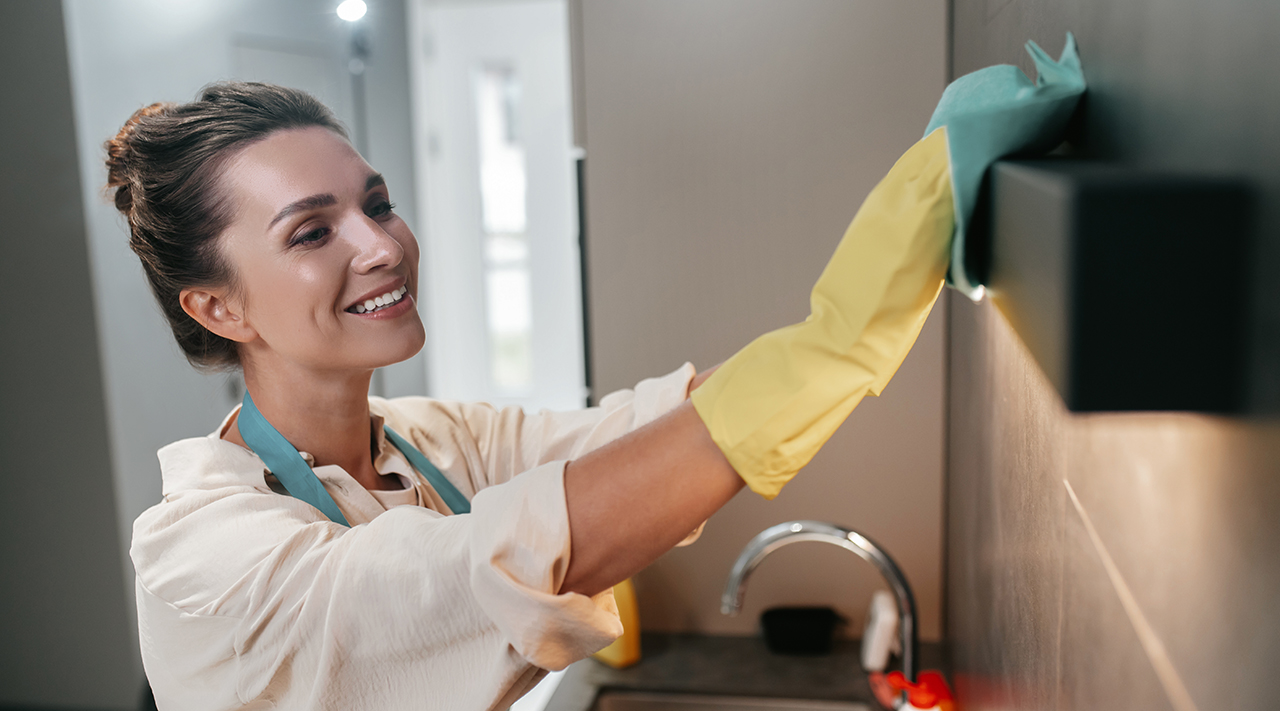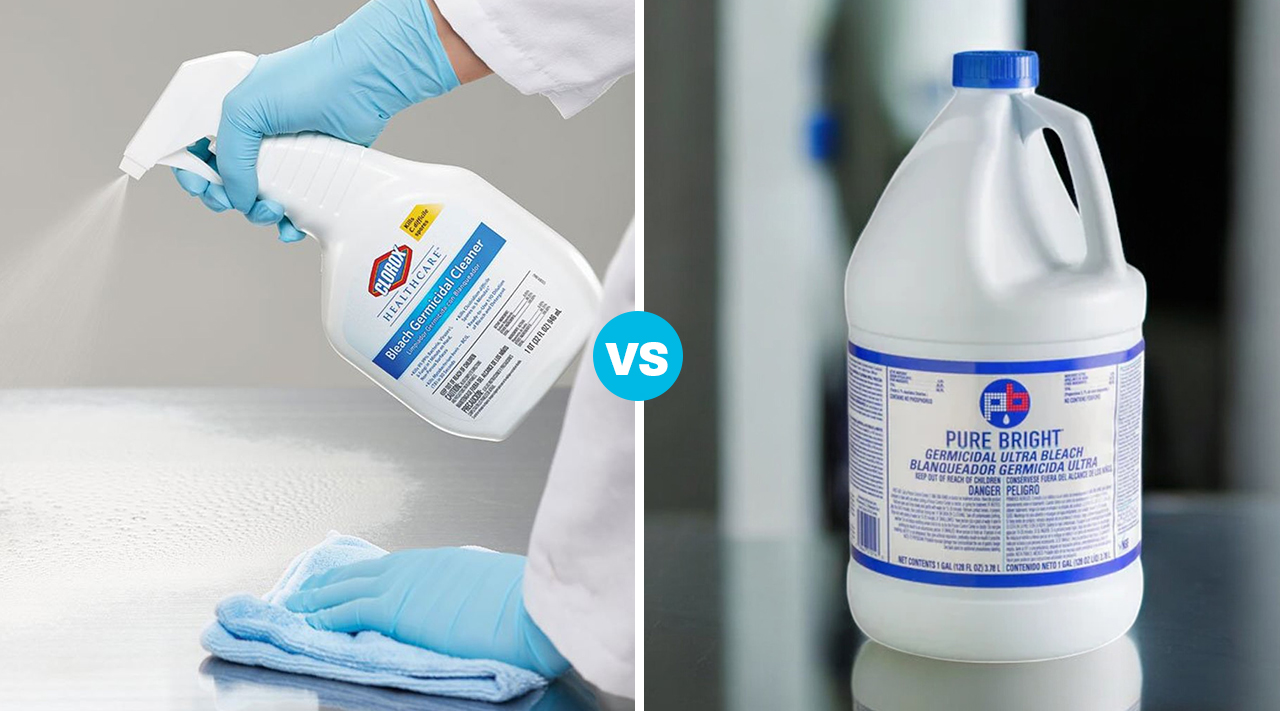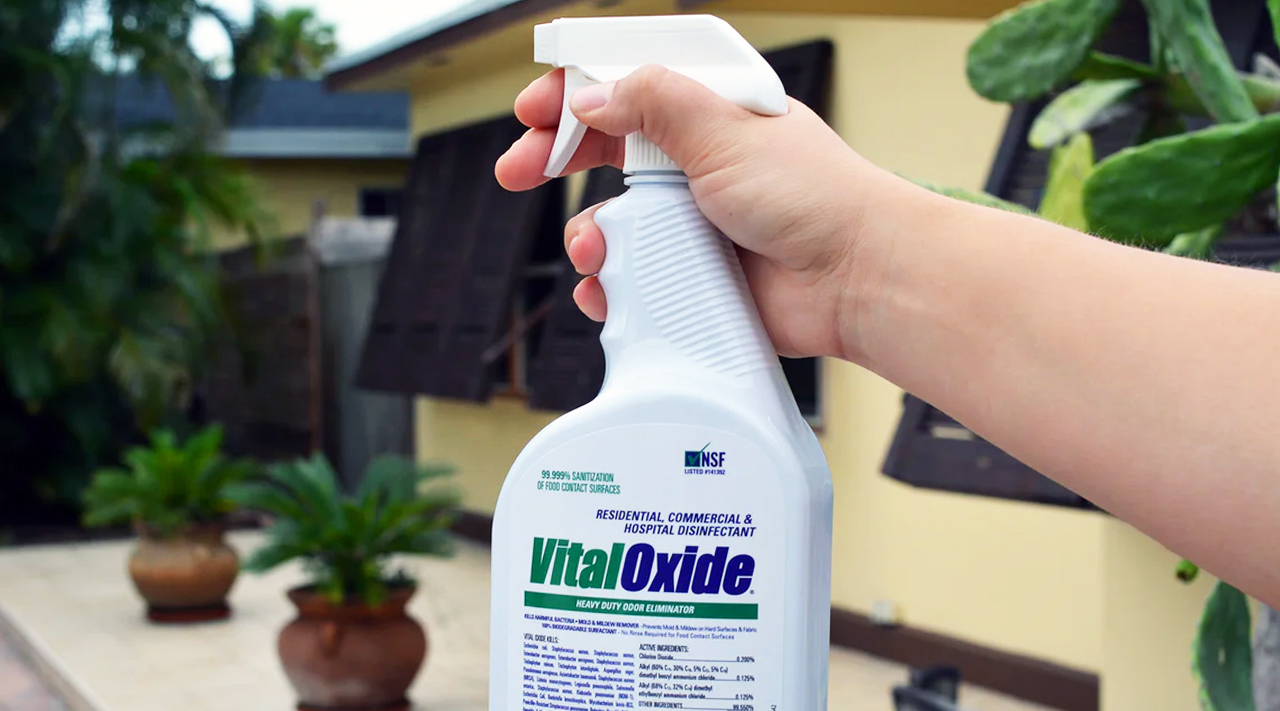Bleach is a powerful cleaning agent commonly used in households, hospitals, and various industries. However, not all bleaches are created equal. The two primary types of bleach— germicidal bleach and regular bleach—serve different purposes and have unique compositions. Understanding their distinctions can help you choose the right bleach for your specific needs and ensure safe usage practices.
This guide provides a comprehensive look at the differences in bleach disinfection capabilities, examining their compositions, uses of bleach, and storage considerations. Understanding these differences is essential if you're looking to optimize cleaning protocols. Check out our disinfection supplies for more related cleaning solutions and products.
The Journey of Bleach: From Historic Origins to Modern Uses
A Brief History of Bleach
Bleach dates back to ancient civilizations, where simple bleaching agents brighten fabrics. Chlorine-based bleach emerged in the 18th century, transforming how people approached bleach disinfection and cleaning. By the 20th century, bleach formulations became specialized, with the rise of germicidal bleach for medical use and regular bleach for household purposes.
Key Differences Between Germicidal and Regular Bleach
Chemical Composition
• Regular Bleach: Primarily contains sodium hypochlorite, a compound known for its cleaning and stain-removing abilities.
• Germicidal Bleach: Often contains additional disinfecting agents and a higher concentration of sodium hypochlorite, making it highly effective in killing a wide range of microorganisms, such as bacteria, viruses, and fungi.
For a breakdown of effective disinfectants, explore our article on choosing the right disinfectant for your needs.
Specific Use Cases for Germicidal and Regular Bleach
Germicidal Bleach
Designed for high-level disinfection, germicidal bleach is ideal for environments requiring stringent sanitization, such as:
• Medical Facilities: Prevents the spread of diseases in hospitals, labs, and clinics.
• Gym and Fitness Centers: Essential for sanitizing equipment, high-touch areas, and locker rooms.
Explore our range of disinfectants.
Regular Bleach
Regular bleach is commonly used in household bleach disinfection for general cleaning, stain removal, and bleach for fabric whitening. It is a staple in:
• Household Cleaning: Suitable for kitchen and bathroom surfaces.
• Laundry: Effective for brightening white clothes and removing stains.
Effectiveness in Killing Pathogens
While germicidal and regular bleach are effective at killing pathogens, germicidal bleach provides a broader spectrum of microbial-killing capabilities, especially in medical and high-risk settings. Scientific studies validate its superior effectiveness in bleach disinfection.
Safety and Health Considerations
Safe Use Tips
Both types of bleach require caution. Improper use can lead to skin irritation, respiratory issues, and even chemical burns. Here are some best practices:
• Ventilation: Always use bleach in a well-ventilated area.
• Personal Protective Equipment: Wear gloves and protective eyewear.
• Avoid Mixing: Never combine bleach with ammonia or other cleaners, as it can produce harmful gases.
For a deeper understanding of safe cleaning practices, read our guide on safe disinfectant usage.
Environmental Impact of Germicidal vs. Regular Bleach
Bleach can pose environmental impact risks, especially germicidal variants with more potent chemicals. If released in large quantities, both types contribute to organochlorines in water systems, potentially impacting aquatic life.
Eco-Friendly Alternatives
As sustainability becomes a priority, consider alternatives like our Biodegradable Disinfectant Wipes that offer disinfecting power with a reduced environmental footprint.

Cost and Market Dynamics
Pricing and Market Trends
Germicidal bleach tends to be more expensive due to its specialized formulation. However, its effectiveness in high-risk areas often justifies the cost. Regular bleach remains widely available and cost-effective for general household and commercial use.
With the increased demand for sanitizing solutions, germicidal bleach comes in various forms products, such as germicidal bleach wipes and sprays, have surged in popularity, particularly in the healthcare and fitness sectors.
Storage and Shelf Life
Proper storage is essential to maintain bleach effectiveness:
• Germicidal Bleach: Retains potency for 6-12 months if stored in a cool, dry place, tightly sealed.
• Regular Bleach: Typically effective for up to 6 months.
Frequently Asked Questions
What is the strongest bleach for cleaning?
For intensive cleaning and disinfection, germicidal bleach is the strongest option, designed to combat pathogens effectively. Regular bleach works well for everyday cleaning tasks.
How do you dilute germicidal bleach for laundry?
Dilute one cup of germicidal bleach per gallon of water. Add the solution to your washing machine's bleach dispenser or directly to the wash cycle for bleach-safe fabrics. Always check the product label for specific dilution recommendations.
Can you use germicidal bleach in laundry?
Yes, but follow dilution guidelines carefully. Germicidal bleach is strong and may not be necessary for everyday laundry. Reserve its use for sanitizing linens or items exposed to bacteria and viruses.
What is the difference between the different types of bleach?
Bleach types vary by strength and intended use:
• Household Bleach: General cleaning and laundry.
• Germicidal Bleach: High-level disinfection in medical and commercial environments.
• Oxygen Bleach: Safe for colored fabrics, eco-friendly, and effective on stains.
• Non-Chlorine Bleach: Mild and suitable for delicate materials.
For more detailed guidance on bleach types and other cleaning solutions, browse our cleaning and disinfecting products.

Choosing between germicidal and regular bleach depends on your specific cleaning needs, safety requirements, and environmental considerations. Germicidal bleach offers high-level disinfection for critical areas, while regular bleach is ideal for routine household cleaning. Always prioritize safe handling, follow product guidelines, and explore eco-friendly alternatives.
For additional cleaning products or disinfectant supplies, visit our Zogics disinfecting supplies page to find solutions tailored to every cleaning scenario.




